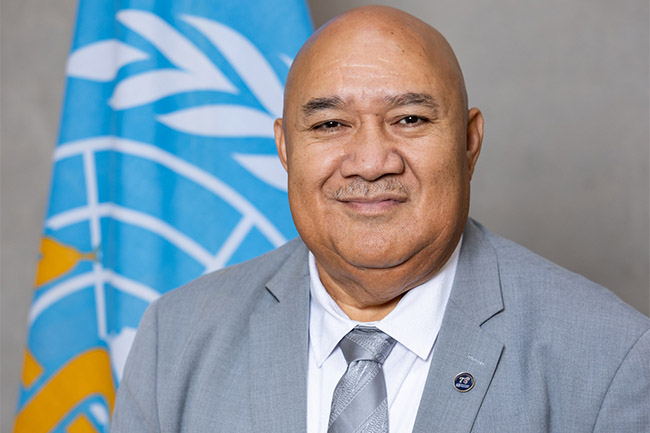
The right to good health for all people is more important than ever, the World Health Organization (WHO) stated on World Health Day in April.
With the theme “My health, my right,” the World Health Day 2024 on 7 April, stressed the need for countries to accelerate action towards universal health coverage, so that all people can access quality health services when and where they need them, as well as addressing other key health threats.
“Good health cannot be a luxury for the few. It is a fundamental right for all,” said WHO Regional Director for the Western Pacific, Dr. Saia Ma’u Piukala.
“Health is an investment in every country’s present and future. The right to health cannot be realised if we don’t deliver on the promise of health for all that countries signed up to through the Sustainable Development Goals.”
Wester Pacific Region access to health
WHO reported that an estimated 782 million of the total 1.9 billion people in the Western Pacific region, or more than two out of five people, still do not have full access to at least one essential health service, such as immunisation, pregnancy and newborn care, treatments for communicable diseases, such as tuberculosis and HIV, as well as for noncommunicable diseases (NCDs) such as diabetes and hypertension.
"Even for those who can access care, high out-of-pocket expenses often cause financial hardship."
One in five people in the region face catastrophic health care spending, meaning they pay an unreasonable amount of money (defined as 10% of their income), when accessing services. "Health expenses often force them to choose between seeking care or paying for food and shelter for their families," WHO stated.
Today, vulnerable populations in the region including poorer and less educated groups, and those living in rural and peri-urban areas still face the greatest challenges in accessing and paying for healthcare, the highest disease burdens and the worst health outcomes.
Growing NCD crises
Continued limited access to affordable, nutritious food, and increasingly polluted environments across the region are contributing to a rise in NCDs such as cancer, diabetes and heart disease.
By 2048, an estimated 21 million people in the Western Pacific are expected to die each year from NCDs, accounting for nine out of 10 deaths in the region, WHO reported.
"Health services to prevent and treat these diseases are not keeping up with demand."
"Nearly 300 million people in the region are unable to afford a healthy diet. Increased availability of cheaper, highly processed foods and drinks that are high in fats, sugars and/or salt and decreased availability of fresh fruits and vegetables are hindering people’s access to nutritious diets and contributing significantly to malnutrition."
Nearly one in four children over the age of 5 years and nearly two in five adults in the Western Pacific are now overweight or obese.
"And these figures are growing."
Moreover, 9 of the 10 countries in the world with the highest prevalence of overweight and obesity are located in the Pacific.
Diet-related NCDs such as diabetes, high blood pressure and heart disease are major causes of disability and early deaths in the region.
Climate impacts
"People also have the right to breathe clean air, drink safe water and use sanitation services. However, 99% of the people in the Western Pacific breathe air that exceeds WHO’s standards for pollution. Every 14 seconds, someone in the region dies from air pollution, caused mainly by burning the same fossil fuels that drive climate change."
Meanwhile, WHO noted that 90 million people in the region do not use a basic drinking-water facility, and more than 400 million do not have access to sanitation services (toilets) that safely manage human waste. Diarrhoea due to unsafe water and sanitation contributes to malnutrition, particularly among the poor, and the spread antimicrobial resistance.
“Through primary health care, as affirmed under the 2018 Declaration of Astana, countries must not only provide affordable, quality healthcare, they must also create healthy societies and environments that will protect people’s health and wellbeing today and into the future,” says Dr Piukala.
More than health services
"The right to health does not relate solely to health services; it also requires other basic conditions for a healthy life, such as safe water, clean air, nutritious food, adequate housing, quality education, decent working conditions, and freedom from discrimination."
In 1950, only 40% of the region lived until the age of 60. WHO stated a hundred years after the right to health was established, that figure is expected to more than double to reach 94% by 2048.
"But living longer does not necessarily mean living healthier unless more action is taken to support people’s right to health, such as reforming primary health care towards universal health coverage."
WHO calls on countries to involve individuals and communities in health decision-making to ensure that health services are tailored to their changing needs throughout the life course.
"Reaching the unreached and upholding the right to health will require countries to harness innovative solutions, including digital health approaches, and work with stakeholders beyond the health sector to improve food systems, reduce air pollution, combat climate change, and build health-promoting environments, among other actions."
Prioritizing health at PIF leaders meeting
Health is one of key areas Tonga will be prioritizing at this year's Pacific Islands Forum leaders meeting, said Tonga's Prime Minister, Hon. Hu'akavameiliku.
The PIF leaders meeting is the most important meeting for the region, that will be held in Nuku'alofa, on 26 - 30 August.



